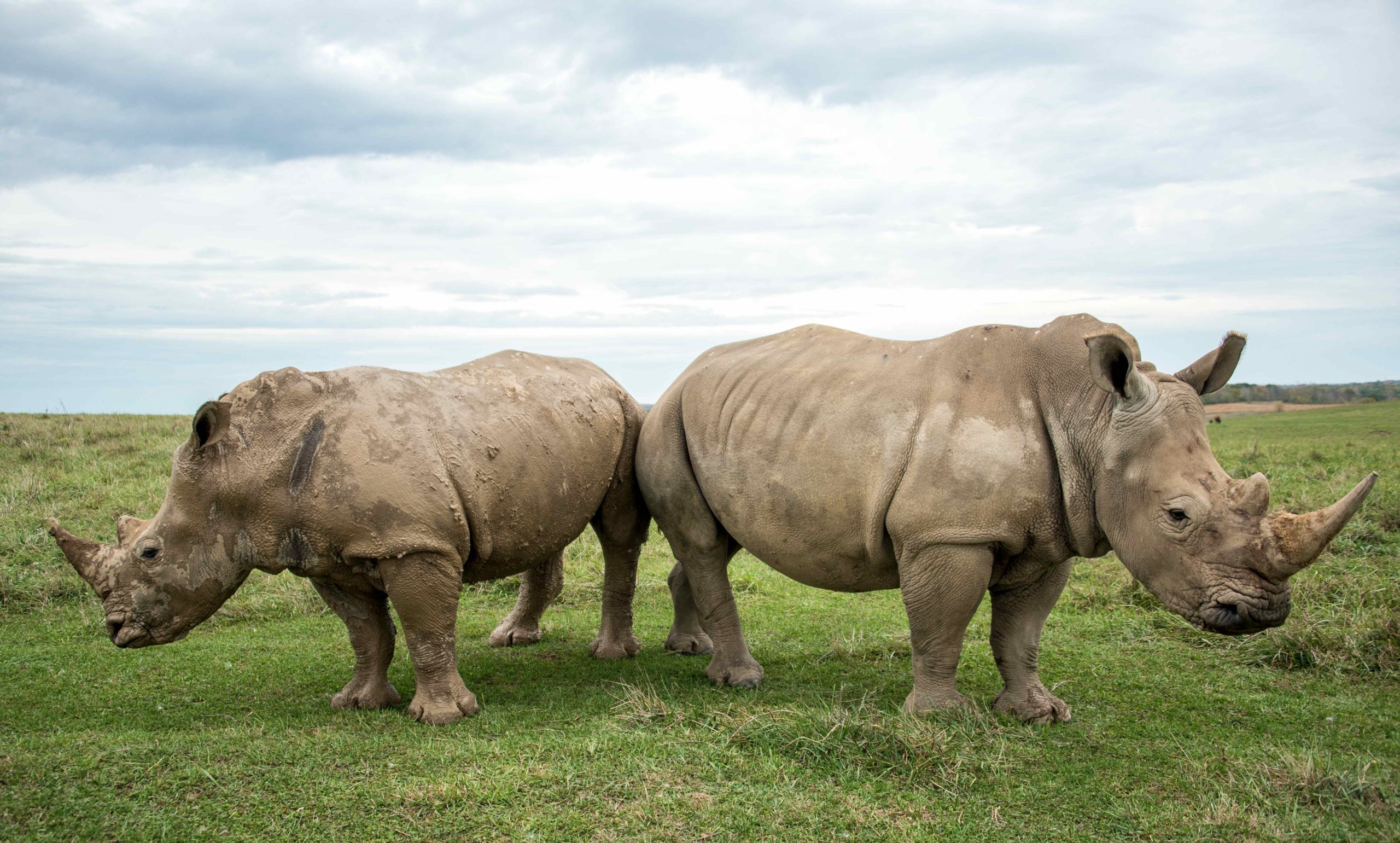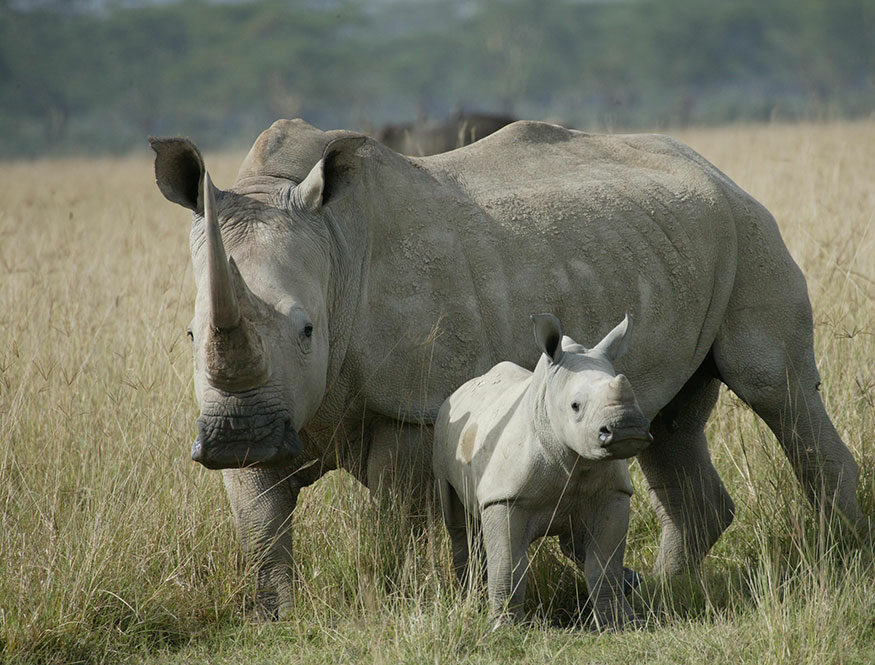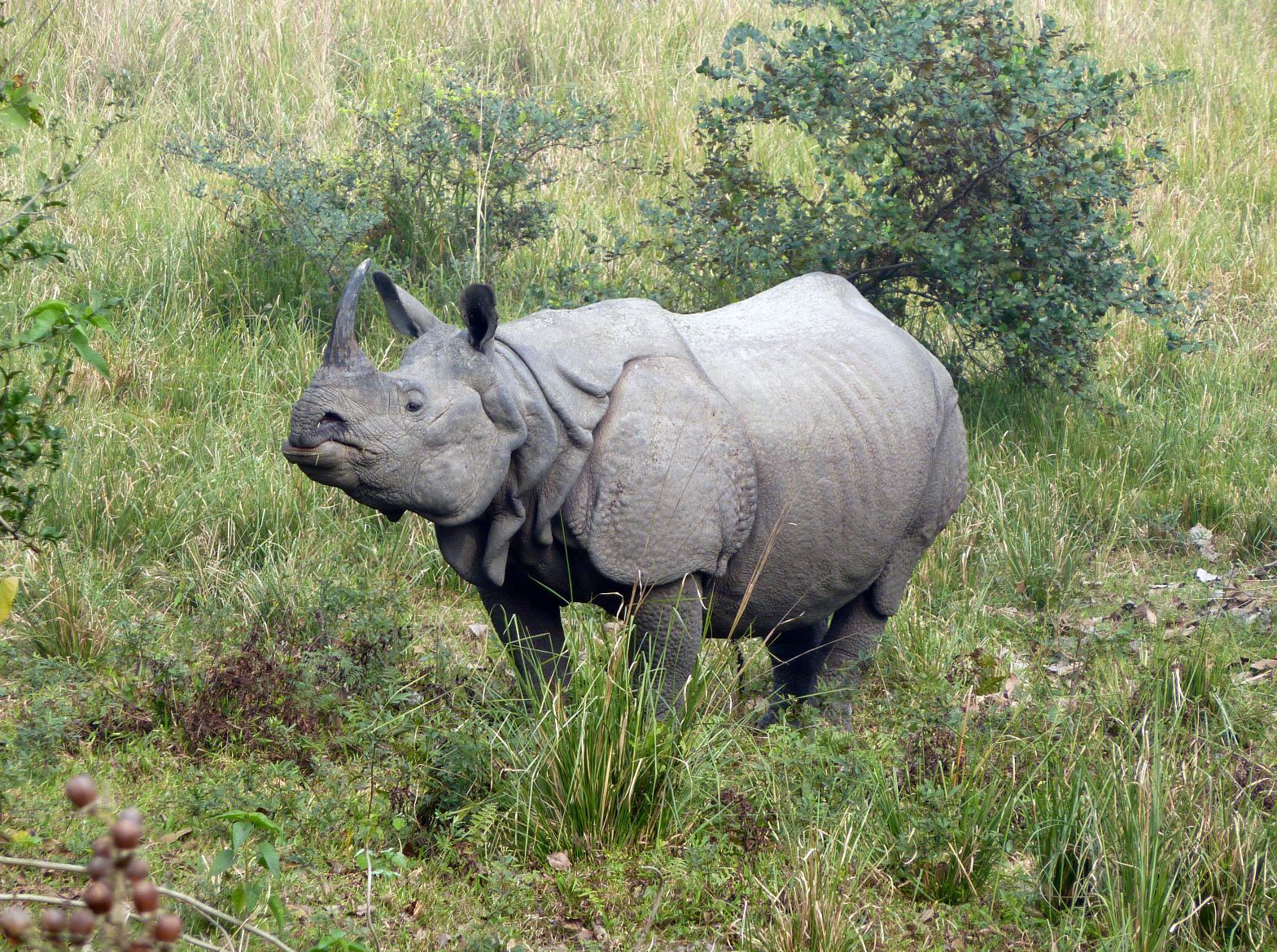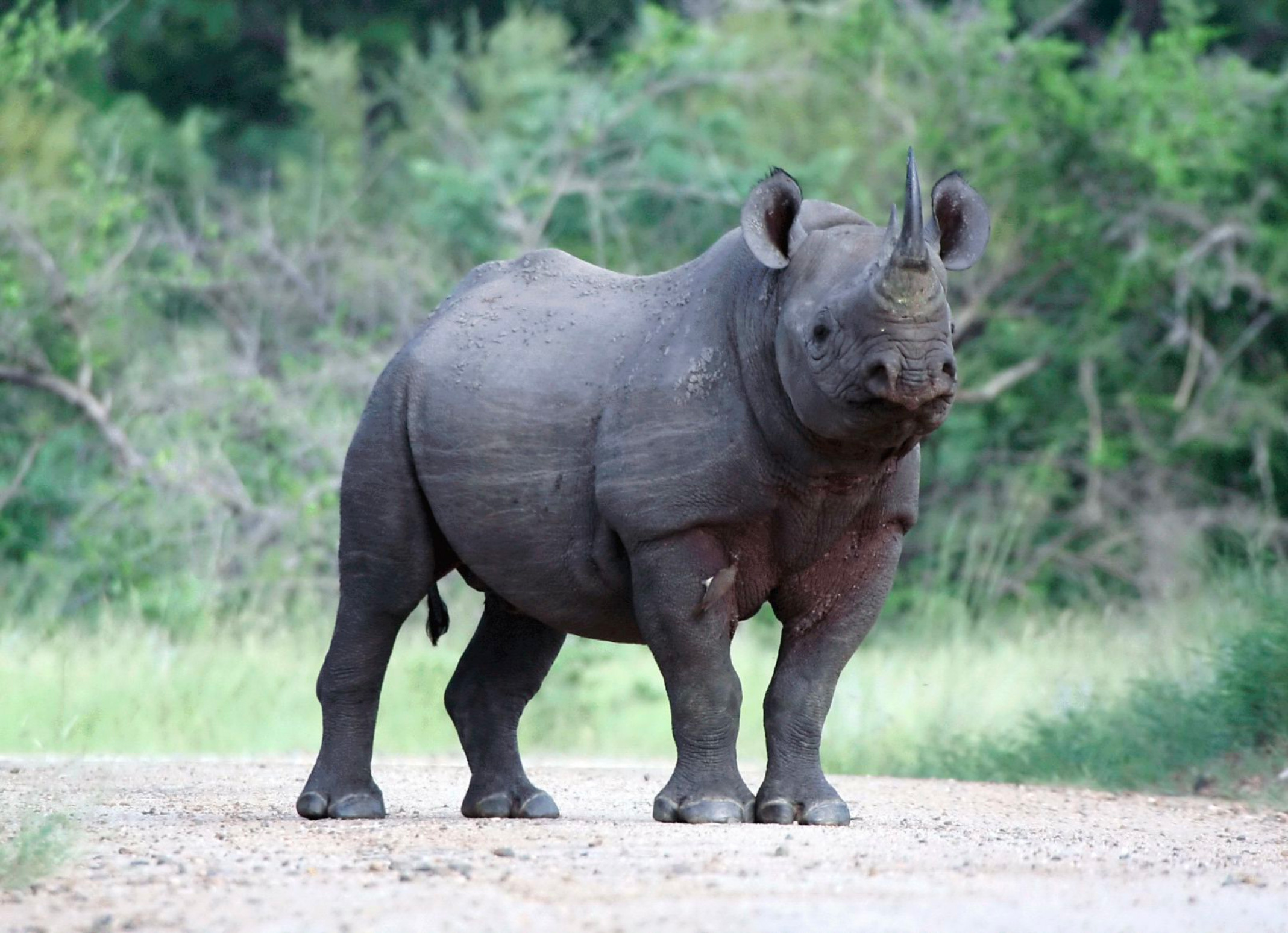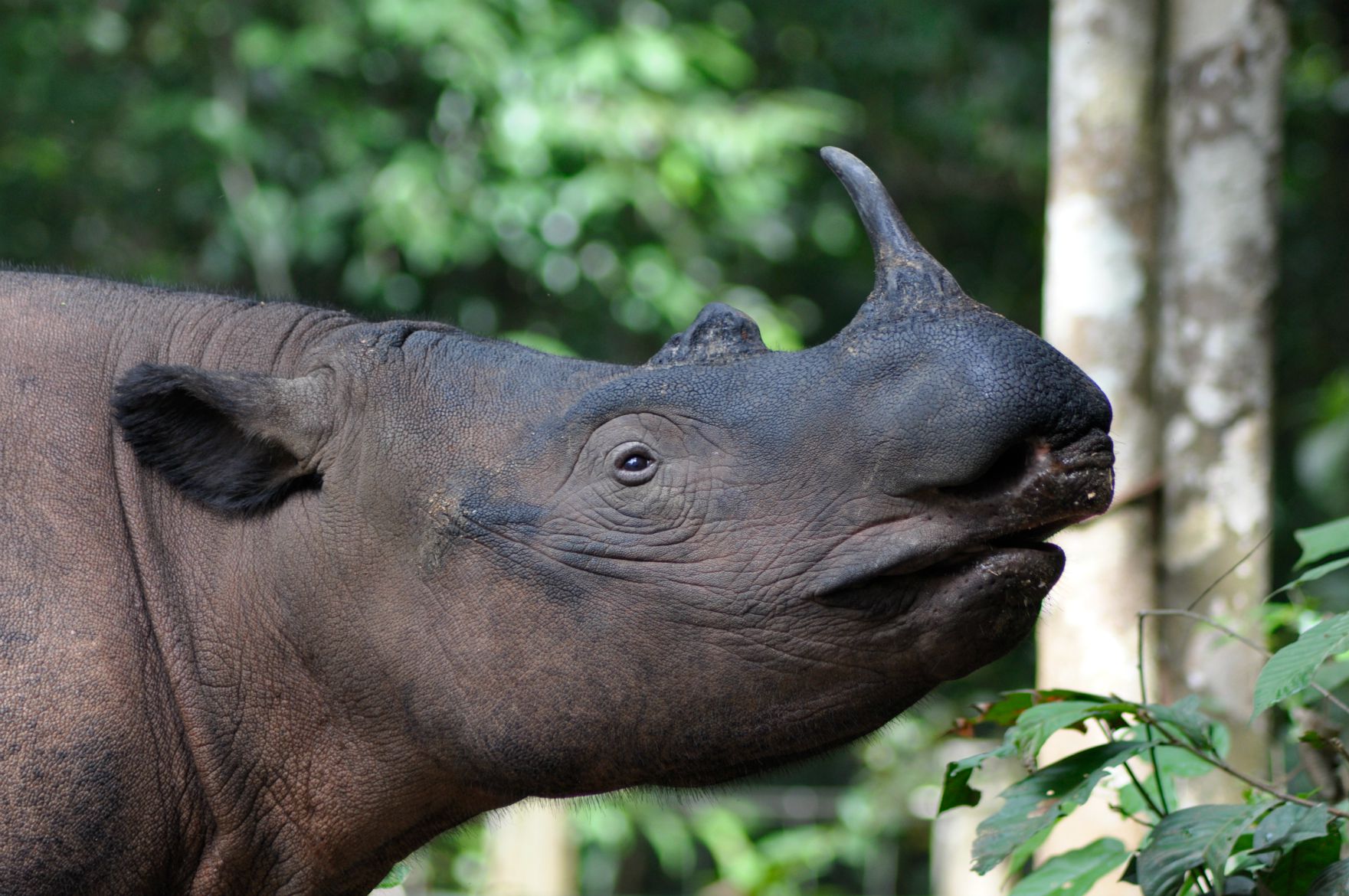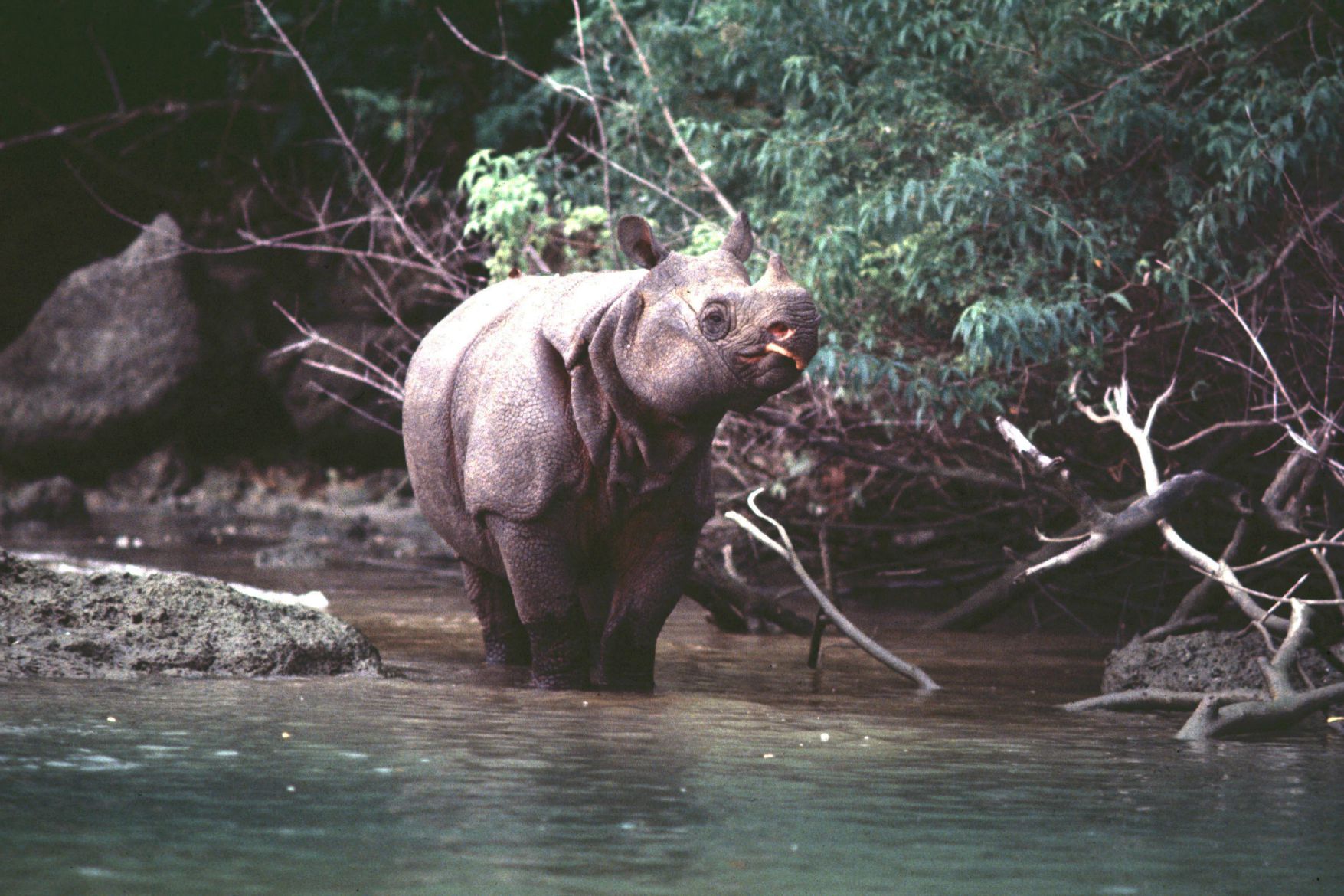The Rhino Family
White rhino
(Ceratotherium simum)
White rhinos (Ceratotherium simum) are the most populous of the five rhino species with approximately 17,464 animals across 11 countries in Africa. There are two white rhino subspecies, southern (C.s. simum) and northern (C.s. cottoni), but as there are only two northern white rhinos left in the world – both females – that subspecies is considered functionally extinct. Historically as a species, white rhinos made an incredible comeback from fewer than 100 individuals in the early 1900s to more than 21,000 at the end of 2012.
Unfortunately, from 2012 to 2021, their large numbers made them the primary target for rhino poachers, who are part of transnational criminal syndicates looking to sell rhino horn on the black market. During this period, white rhino numbers decreased by 24% to an estimated 15,942. Although the number of rhino deaths annually has decreased since the most recent peak in 2015, poaching remains the biggest threat to rhinos, and white rhinos in particular bear the brunt. Last year, the International Union for the Conservation of Nature (IUCN) Species Survival Commission’s African Rhino Specialist Group (AfRSG) announced the first population increase for the white rhino species in over a decade. They have recently announced another 3.4% increase for white rhinos, bringing their species estimate to 17,464 as of the end of 2023.
IUCN Red List Status: Near Threatened
Facts
Biology
- The white rhino lives in Africa, in long and short-grass savannahs.
- Just five countries hold 99% of Africa’s white rhinos – the vast majority of those in South Africa.
- White rhinos are grazers. Its wide, square upper lip is adapted for feeding on grasses.
- White rhinos can live to be 35-40 years of age. Gestation lasts approximately 16 months, and mothers give birth to one calf every 2-3 years.
- White rhinos are semi-social and territorial. Females and subadults generally are social, but bulls are often solitary.
Common Names
White rhinoceros is taken from the Afrikaans word describing its mouth: “wyd”, meaning “wide”. Early English settlers misinterpreted the “wyd” for “white”.
It is also sometimes called the square-lipped rhinoceros.
Scientific Name and Origin
Ceratotherium simum Ceratotherium from the Greek “cerato”, meaning “horn” and “thorium”, meaning “wild beast” and “simum” from the Greek simus, meaning “flat nosed.”
Current White Rhino Numbers and Distribution
There are an estimated 17,464 white rhinos in the wild.
Physical Characteristics
SIZE
Weight: 4,000-6,000 lbs (1,800 – 2,700 kg)
Height: 5 – 6 feet (1.5 – 1.8 m) tall at shoulder
Length: 10-16 feet (3 – 5 m) length of head and body
HORN
White rhinos have two horns. The larger front horn measures 37 – 79 inches (94 – 201 cm). The rear horn measures up to 22 inches (55 cm) long.
Other Features
Relatively broad snout with a square lip.

